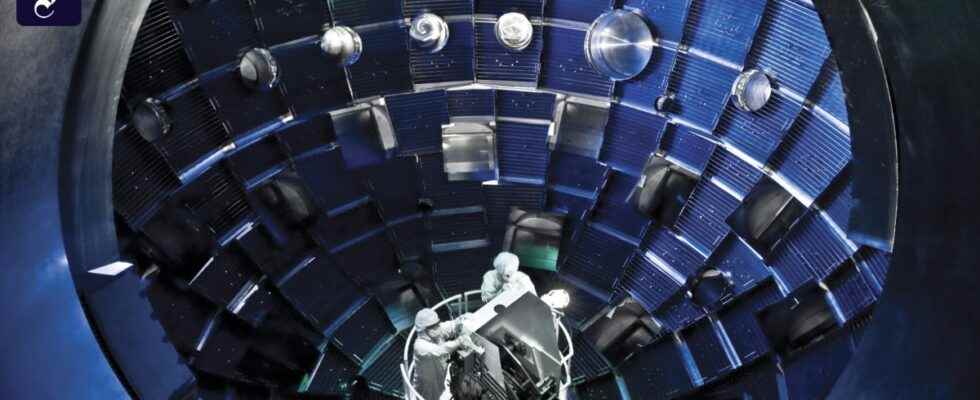WScientists in the USA have made a historic breakthrough in the field of nuclear fusion. For the first time, the fusion of atomic nuclei produced more energy than was consumed, as US Energy Secretary Jennifer Granholm announced in Washington on Tuesday. “Put simply, this is one of the most impressive scientific achievements of the 21st century.”
The results, obtained by a team of researchers at the state’s National Ignition Facility (NIF) at Lawrence Livermore National Laboratory in California, mark a milestone on the road to unlocking a new energy source. In a few years, nuclear fusion could possibly be used to generate large quantities of electricity in a climate-neutral and safe manner. However, there is still a long way to go before mass production due to the continuing major technical hurdles.
Almost a year ago, advances in nuclear fusion were announced at the institute. A research team reported in the journal “Nature” at the beginning of the year that the ignition of the plasma was achieved. This ultimately results in the fusion reaction becoming self-sustaining. In the nuclear fusion reactor, the fuel is in the form of plasma – this state of aggregation is created when a gas is extremely heated.
Both nuclear power and nuclear fusion derive energy from the binding forces of atomic nuclei. With nuclear power, however, large atoms are split, radioactive waste is produced, among other things, and there is a risk of serious accidents. Nuclear fusion, on the other hand, fuses small atomic nuclei into larger ones, and the technology is considered clean and safe. This form of energy generation is similar to what happens in stars like the sun.
Good news: US Secretary of Energy Jennifer Granholm
:
Image: AFP
For their experiments, the researchers in California used the world’s most powerful laser system to convert tiny amounts of heavy and superheavy hydrogen (deuterium and tritium) into plasma at a temperature of around one million degrees. Many laser beams heat up the inside of a container a few millimeters in size.
Congratulations from Germany
The head of the large research facility Wendelstein 7-X in Greifswald also sees a “breakthrough” in the new results of the research team. What the scientists have achieved is very impressive, Thomas Klinger told the German Press Agency on Tuesday. “It’s really a step, an important step,” said Klinger. He said that considering the energy needs of the entire engineering facility, even in California, no more energy was generated than consumed. Rather, the calculation refers to the energy arriving in the physical process. It is scientific standard to first balance the energy within such a process. This is basic physics. Then came technical questions.
The physicist pointed out that the energy efficiency of lasers, such as those used in California, has so far been lower than that of heating systems such as those used in Greifswald – with microwaves, for example. He also sees problems with the translation into a power plant design. The researchers in the USA had adjusted their system for weeks for the experiment. For a power plant, however, you need countless fusion reactions over a longer period of time. Here he initially sees advantages in nuclear fusion with magnets.
The fact that such systems have not yet produced more energy than is input is due to the fact that the systems have so far simply been too small. A reactor currently being built in southern France, on the other hand, should be large enough to generate ten times as much energy as is put into it. Klinger can imagine that at some point there will be power plants with both laser and magnet technology. According to the current status, however, faster implementation is becoming apparent for systems with magnets.
